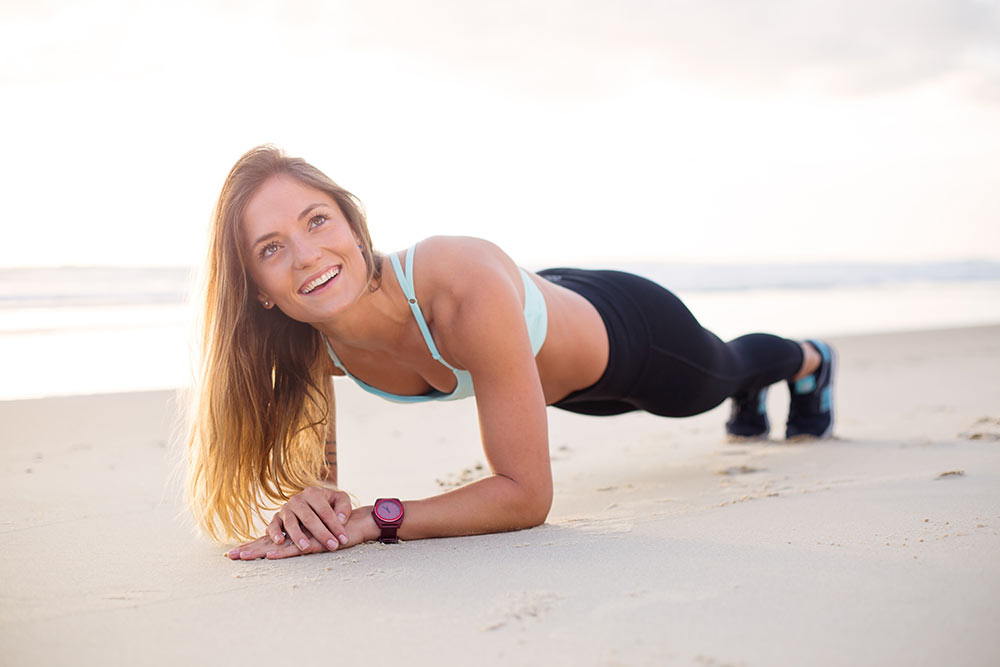Abdominal training has always been an obsession.
We have seen (and heard) all colors.
Who trains i big three (squat, deadlift and bench) tells you that the abdominals already do enough with the three movements. Those with militaristic propensity churn out 100 series, 200 crunch. Those who can at least turn them into sit ups.
In the eighties there was the fixed for hanging upside down and churning out series on very sweaty series upside down.
Then the abdominals suddenly became the core, or at least a part of it.
If you talk about sit-ups today, the abdominal plank is the fashion.
Index
With the abdominal plank we train in a static way core, the system of muscular bundles that surrounds the internal organs of the abdomen.
Its importance in sport - but also in life, at least if we want to do something more than just watching Netflix - is fundamental, and has been studied in every way.
A strong core guarantees stability during movements, protection of the lumbar spine during the most demanding lifts, and transfer of energy from the legs to the upper body.
The more you have, the more you put it.
The plank is pretty easy to train. But it is essential to have the right position.
The right position of the abdominal plank
It is essential that the lumbar spine does not go into hyperlordosis. (It is possible that subjects predisposed to low back pain will try them during the exercise)
Buttocks e core they must be contracted so keep the pelvis in retroversion.
And the shoulders?
As for the shoulders, the ideal position is the hollow: abducted shoulder blades and fore shoulders.
In this way the shoulders, in thrust, will contribute to the retroversion of the pelvis.
Being a static exercise, a healthy athlete will have no trouble maintaining the shoulder position.
Which muscles I train with the plank.
It seems incredible, given that let's talk about a static exercise, but the properly performed abdominal plank involves the 90% of the body musculature.
In particular it trains the abdominal rectum, obliques (both external and internal), ileus psoas and large gluteus.
I will indicate a couple: a common one, and a diabolical one.
Side plank
Puts theemphasis on stimulating the oblique muscles, and is an excellent exercise for the gluteus medius.
Correct execution:
Elbow and forearm are resting on the ground, sideways from the body, the feet are joined, and the usual straight line between head, shoulders, trunk and pelvis.
The back remains neutral and, above all, the pelvis should not lean in any direction.
RKX plank
If you go to gyms but don't know them Pavel Tsatsouline, it's a problem. But it is not my intention to fill this gap now. Only, know that the good Russian invented this plank variant that if at first glance it may seem like a normal exercise, it turns out to be essentially twice as hard.
These are small adjustments to make when you are already in plank position:
- Clench your fists
- Move the contact point of the elbows to the ground slightly ahead
- Pull your shoulders down
- Contract as much as you can the quadriceps, so that the knees move upwards
- Squeeze your buttocks
- You can possibly push back the heels, so as to generate tension even in the calves.
The goal of these adjustments is increase the general tension of the whole body.
How do I insert the abdominal plank into my workouts?
As you want. (What a response)
The best way to train the abdominal plank is to work on time, that is, to increase your resistance to isometry.
You can insert the abdominal plank variants in more articulated abdominal circuits, or make of Tabata focus on the plank.
Try to win the challenge plank (4 uninterrupted minutes of the exercise), or points directly to the world record:
8 hours and 1 minute if you are a man, 4 hours 20 if you are a woman.

